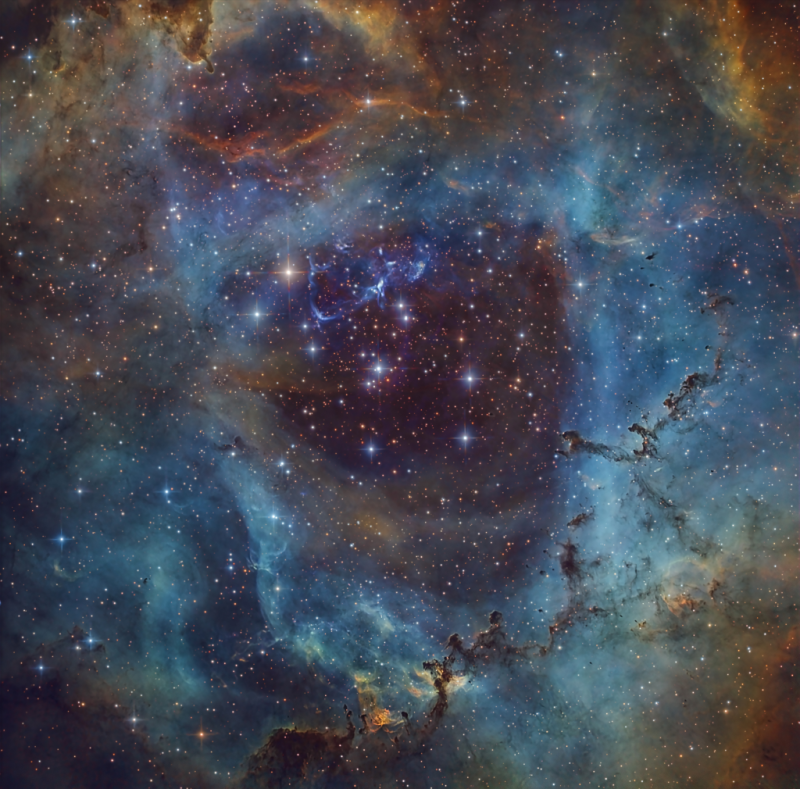Credit & Copyright: Tommy Lease
(Denver Astronomical Society)
Explanation:
Not all roses are red
of course,
but they can still be very pretty.
Likewise, the beautiful
Rosette
Nebula and other star forming regions are often shown in
astronomical images with a predominately red hue,
in part because the dominant emission in the nebula is
from hydrogen atoms.
Hydrogen's strongest optical emission line, known as H-alpha,
is in the red region of the spectrum.
But the beauty of an emission nebula need not be appreciated
in red light alone.
Other atoms in the nebula are also excited by energetic
starlight and produce narrow emission lines as well.
In this close-up view
of the Rosette Nebula, narrowband images are mapped into broadband
colors to show emission from Sulfur atoms in red, Hydrogen in green, and
Oxygen in blue.
In fact, the
scheme
of mapping
these narrow atomic emission lines (SHO) into the broader colors (RGB) is
adopted in many
Hubble images
of emission nebulae.
This image spans about 50 light-years across the center of the
Rosette Nebula.
The nebula lies some 3,000
light-years away
in the constellation Monoceros.
1999 2000 2001 2002 2003 2004 2005 2006 2007 2008 2009 2010 2011 2012 2013 2014 2015 2016 2017 2018 2019 2020 2021 2022 2023 2024 2025 |
Yanvar' Fevral' Mart Aprel' Mai Iyun' Iyul' Avgust Sentyabr' Oktyabr' Noyabr' Dekabr' |
NASA Web Site Statements, Warnings, and Disclaimers
NASA Official: Jay Norris. Specific rights apply.
A service of: LHEA at NASA / GSFC
& Michigan Tech. U.
|
Publikacii s klyuchevymi slovami:
NGC 2244 - Rosette Nebula - Tumannost' Rozetka
Publikacii so slovami: NGC 2244 - Rosette Nebula - Tumannost' Rozetka | |
Sm. takzhe:
Vse publikacii na tu zhe temu >> | |
